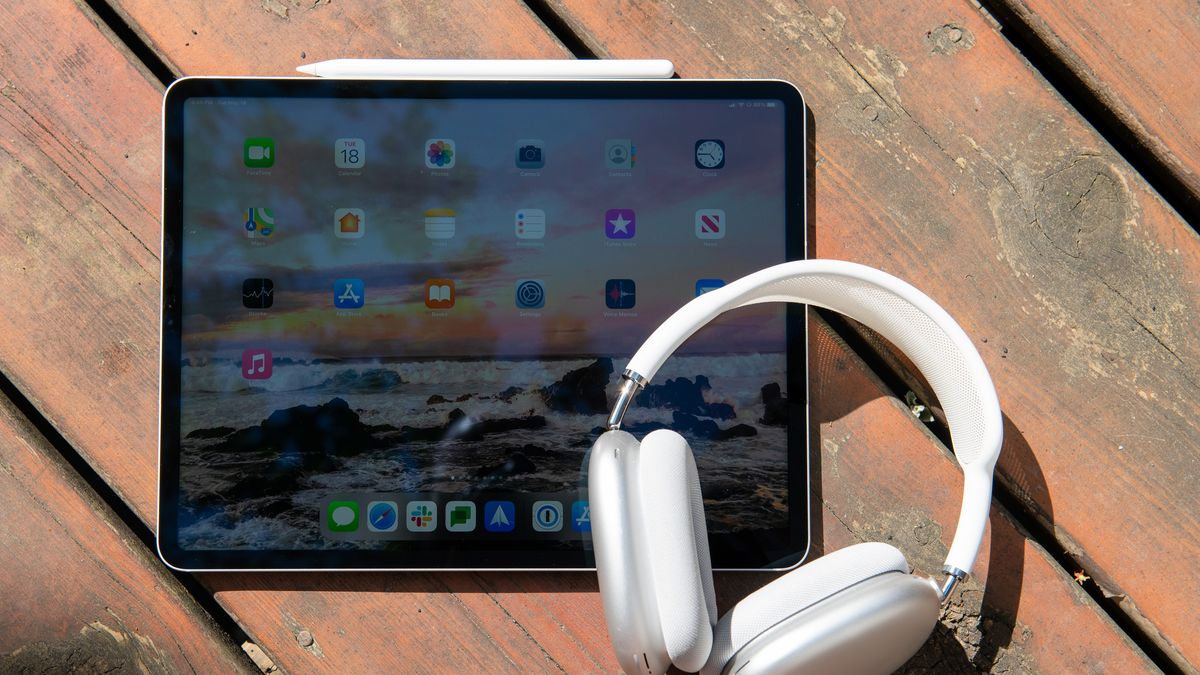Seeking out the best iPad for artists is a little different from the usual route. iPads are multi-purpose devices so you can watch TV shows, send emails, read books, and — of course — be more creative. For any artist who works digitally, they’re a must-have with plenty of drawing apps and accessories, like the Apple Pencil 2, giving you extensive functionality.
iPads are easily some of the best tablets you can buy thanks to their combination of portability and power. While even the very best MacBooks lack a touch screen and can be a little thick in your backpack, iPads can slip into the slimmest of bags and have a highly responsive touch interface.
If you’re a creative type looking for an outlet, an iPad is a great drawing device that also pairs well with some of the best note-taking apps too. Hopes continue for a 14-inch M2 iPad that could take the top spot, but while we wait, here are the best iPads for artists currently available.
Best iPad for artists: iPad Pro 2022 (12.9-inch)
You can always trust iMore.
Our team of Apple experts have years of experience testing all kinds of tech and gadgets, so you can be sure our recommendations and criticisms are accurate and helpful. Find out more about how we test.
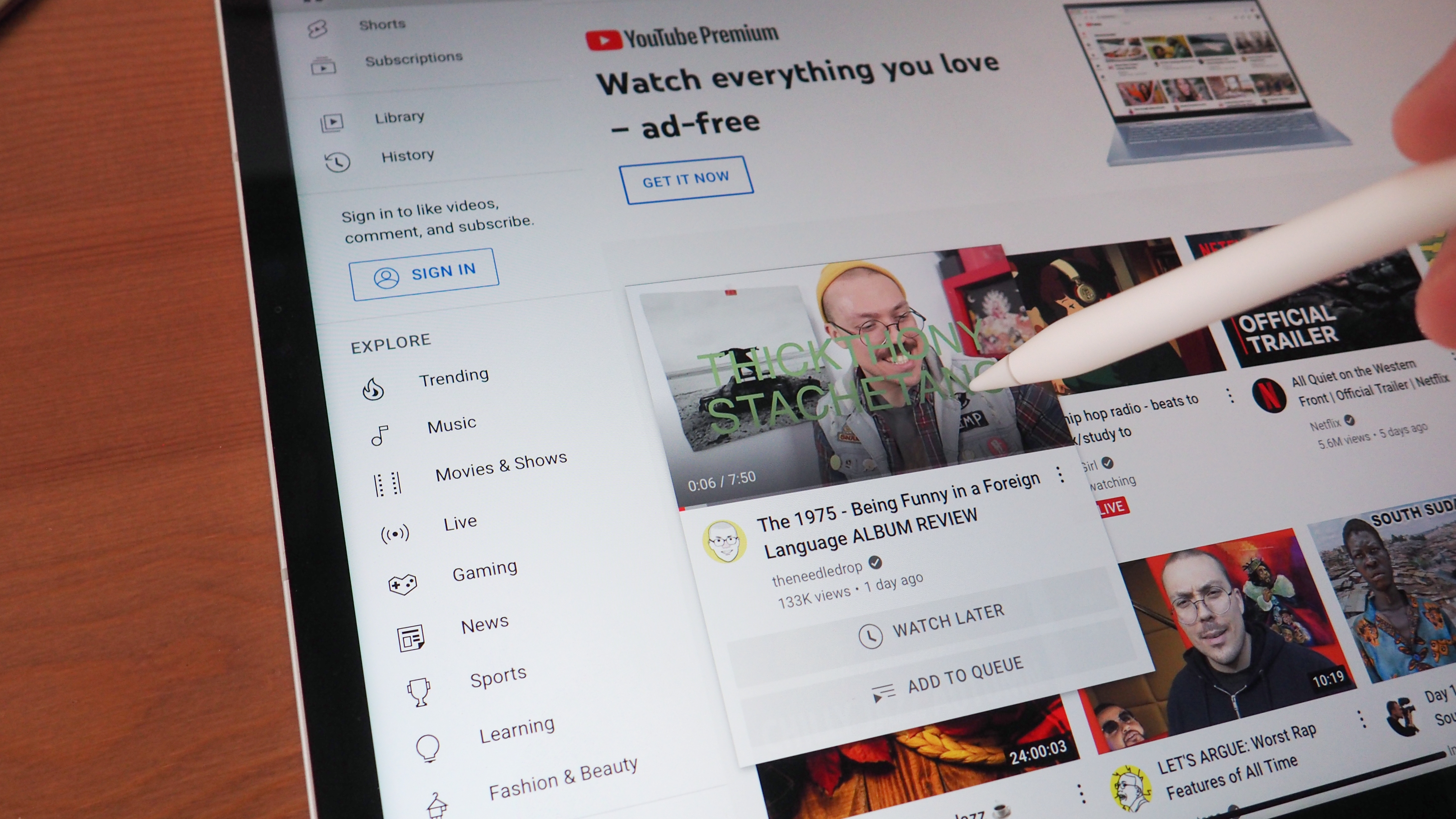
The top pick for the best iPad for artists is easily the latest generation of the 12.9-inch iPad Pro. It’s the most powerful tablet Apple has made so far, offering an even better display than before, M2 SoC, Face ID support, and plenty more.
The iPad Pro’s 12.9-inch display is a great canvas size for your art, whether you’re sketching, painting, or editing photos — all while still letting you be mobile. In our iMore review, we noticed that the Liquid Retina XDR display in the 12.9-inch iPad Pro offers incredible color accuracy and shows off HDR images and video in all of its glory. So you’re getting the richest blacks and most vibrant colors whatever you’re doing on it.
The display is also a ProMotion screen so it will run at up to 120Hz. That’s particularly useful when working with the Apple Pencil, as it means your strokes appear on the screen near-instantly, just like if you were using a real piece of paper. It renders much more fluidly than it would on other iPads.
The iPad Pro is also very powerful, offering exceptional performance. The M2 chip is the same one that is found in iMacs, MacBook Air, and MacBook Pro. It backs that up with an 8-core GPU and 8GB of RAM on the 128/256/512GB models with the RAM increasing to 16GB on the 1TB and 2TB options. When using drawing apps like Procreate or photo editors like Pixelmator Photo, the extra power is invaluable for a smoother painting or sketching experience, or simply applying photo edits more quickly.
The 2022 iPad Pro works only with the second-generation Apple Pencil when it comes to digital sketching, painting, and other artistic projects. It magnetically attaches to one side of the iPad with that attachment point also working as an inductive charging space. You can carry it around with you and charge it at the same time without having to stick it out of the charging port of the iPad Pro itself.
Using the Pencil is similar to how it has been on other iPads. It will recognize things like tilt and any pressure applied to the tip, also supporting palm rejection. It has a new matte finish which feels better to use than the glossy finish of the original Apple Pencil. It also has a small gesture area on its flat side, so you can double-tap to switch between your two most recent tools quickly.
For some, the 12.9-inch iPad Pro might be too big to be completely practical. If you’re seeking an iPad as a supplement to your Mac rather than as a primary artistic tool, a smaller size might suit your needs better. That also applies if you need to fit it into slightly smaller bags. The latest 12.9-inch iPad Pro may have a smaller footprint than the previous model, but it’s still understandably large.
There’s also the issue of price. iPad Pros have always been more expensive than their non-Pro alternatives, but at just over $1,000, the 2022 iPad Pro is a big ask for many wallets. Factor in another $130 for the Apple Pencil, and it’s certainly pricey. While you get the biggest and best iPad screen around, and it has a lot of power, you’re paying for that privilege.
Best for portability: iPad Pro 2022 (11-inch)
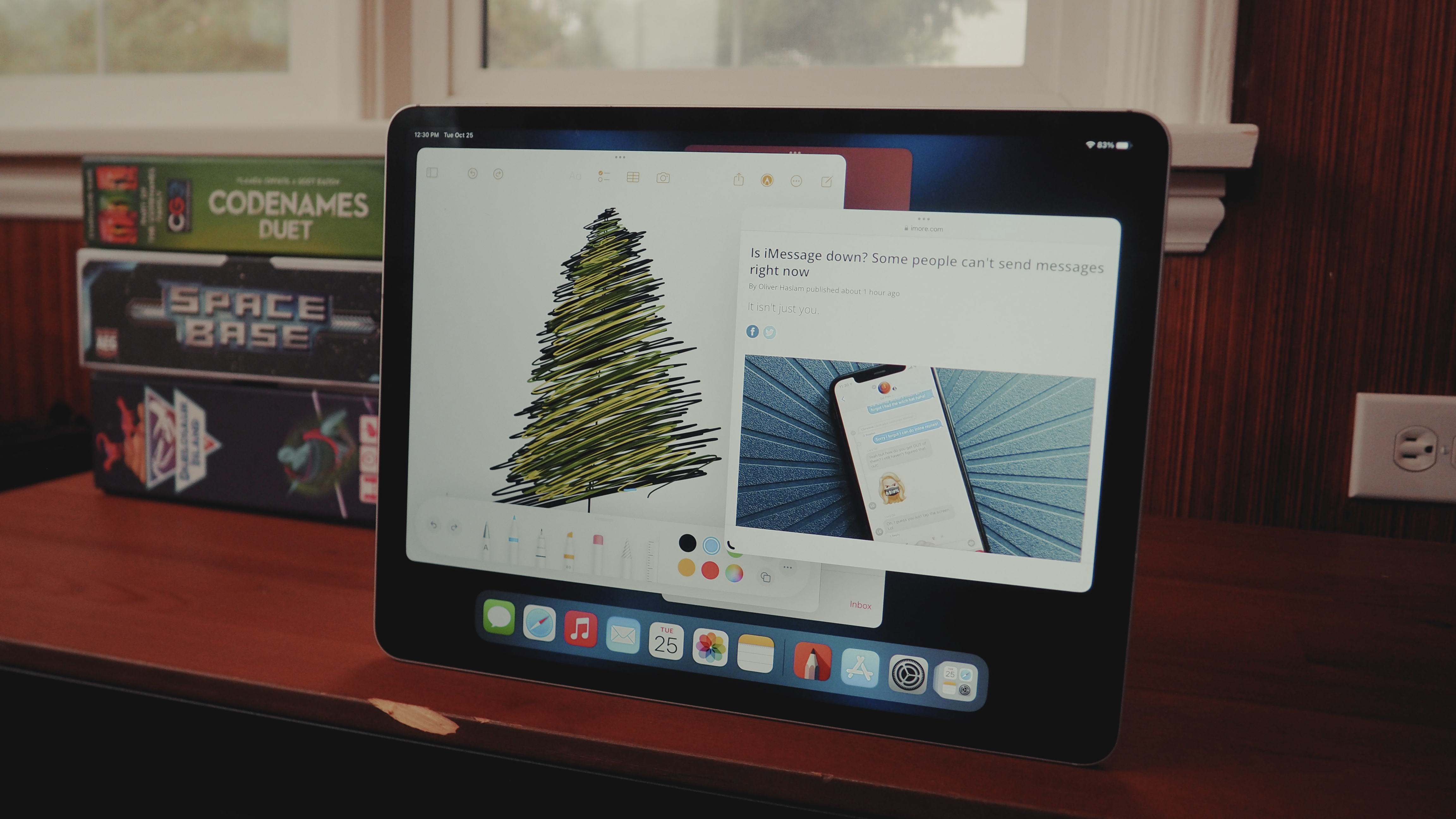
The 11-inch 2022 iPad Pro is, predictably, similar to its larger counterpart, but we’ve split them into two entires as the size and display still makes them suitably different.
One of the core advantages of the 11-inch iPad Pro over the 12.9-inch model or the 10.9-inch iPad Air is that it fits perfectly between the two, offering the portability of the old 10.9-inch Air while packing the power of the 12.9-inch Pro. The 11-inch iPad Pro is about the same size as the previous iPad Air, with an ever-so-slightly larger screen. It might not sound like much but the slightest difference adds up for someone seeking a digital canvas. It’s a good size for drawing, photo editing, or other artistic activity. We still prefer the larger 12.9-inch screen, but if you need a little more portability, it’s a worthy trade-off.
The other notable trade-off is that only the 12.9-inch iPad Pro has a Liquid Retina XDR display. The 11-inch sticks with a regular Liquid Retina display, so the larger model offers slightly better quality when it comes to HDR content, vibrant hues, and deeper blacks. However, the regular Liquid Retina display is still great and a valid choice for artists on the move.
It also still packs the M2 chip seen on the larger model, along with 8GB of RAM with 128/256/512GB models and 16GB RAM for the 1TB/2TB options. Both offer the same 10-hour battery life, cameras with Center Stage support, and the same iPadOS experience. It’s just the size and display type that are the differences between these two.
In an ideal world, we’d go with the bigger screen but if portability is important to you, this remains an excellent and powerful choice.
Best mid-range price: iPad Air 5 (2022)
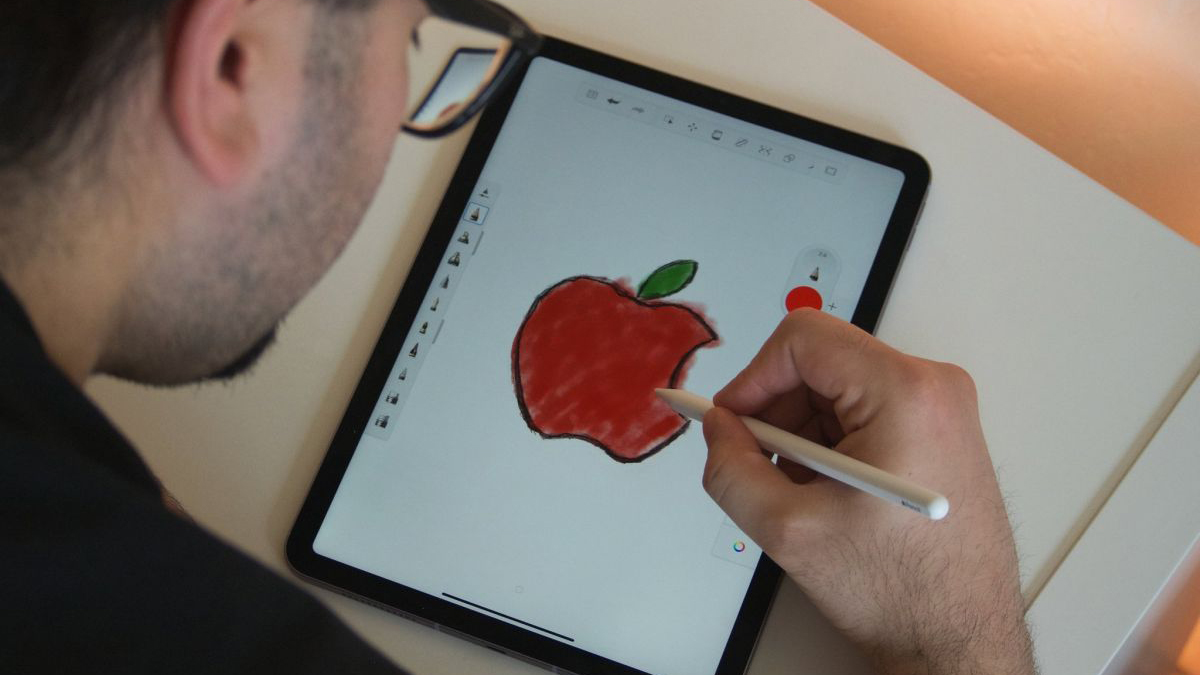
The iPad Air 5 slips in between the lower-priced iPad 10th generation and the extra screen real estate afforded to the iPad Pro lineup. It’s the best overall iPad for most people. When we reviewed the iPad Air 5, we found the 10.9-inch screen to be a good size for drawing and painting, while also being appropriate for photo editing.
For artists, the iPad Air 5 also has Apple Pencil 2 support which is near-essential. Unlike cheaper models of iPad (other than the latest iPad mini) which only support the first-generation Apple Pencil, the iPad Air 5 has all the advantages of the sensitivity and features the Apple Pencil 2 brings to the table. It charges when it’s attached to the side of the iPad Air 5, just like the iPad Pro and iPad mini, so you don’t need to lose out on a port.
With the iPad Air 5, you get a machine with an excellent balance of screen size, power, and price.
The iPad Air 5 is also powered by the M1 chip we’ve seen on slightly older examples of the best Mac as well as the previous generation of iPad Pros. It remains a powerful processor that ensures the iPad Air 5 is extremely responsive and speedy, no matter what you’re using it for. It’s the perfect mobile artistic platform for many.
The Air also has a laminated True Tone display. The display combines the iPad’s touch layer with the LCD display layer into a single piece, leaving no gap between them. That means you gain a display of better overall quality than a non-laminated one, with better images and a more vibrant range of colors. True Tone adapts the display’s temperature to the light of your current room, so it appears as if the room you’re sitting in is lighting it. It’s not overpowering so it’s suitable for artists, but you can always disable it via Control Center.
Wondering why the iPad Air 5 is the best value pick rather than the best overall? It mostly comes down to its screen size, design, and feature set. It offers much of what you love to see in the 11-inch iPad Pro but with a slightly weaker screen and older processor.
Other details it’s missing include Touch ID. Instead of offering FaceID, it has Touch ID built into the power button on the top of the iPad. That might be useful to some people, but for most, it’ll feel like a step backwards if you’re used to using Face ID. The iPad Air 5 also lacks a ProMotion display so you won’t get a buttery smooth display with up to 120Hz refresh rate as with the iPad Pro range. There’s also no four-speaker system like the iPad Pro, or a newer camera array.
Despite those flaws, the iPad Air 5 is still a great proposition for anyone who doesn’t want to spend a fortune. At $599, it’s $200 cheaper than the 11-inch iPad Pro which will easily pay for an Apple Pencil 2 and more. If you don’t need the few “pro” features that the iPad Pro offers, the iPad Air 5 is the clear winner for artists. It’s a compelling product for anyone who doesn’t want to spend any more than they need to.
Best for travel: iPad mini 6
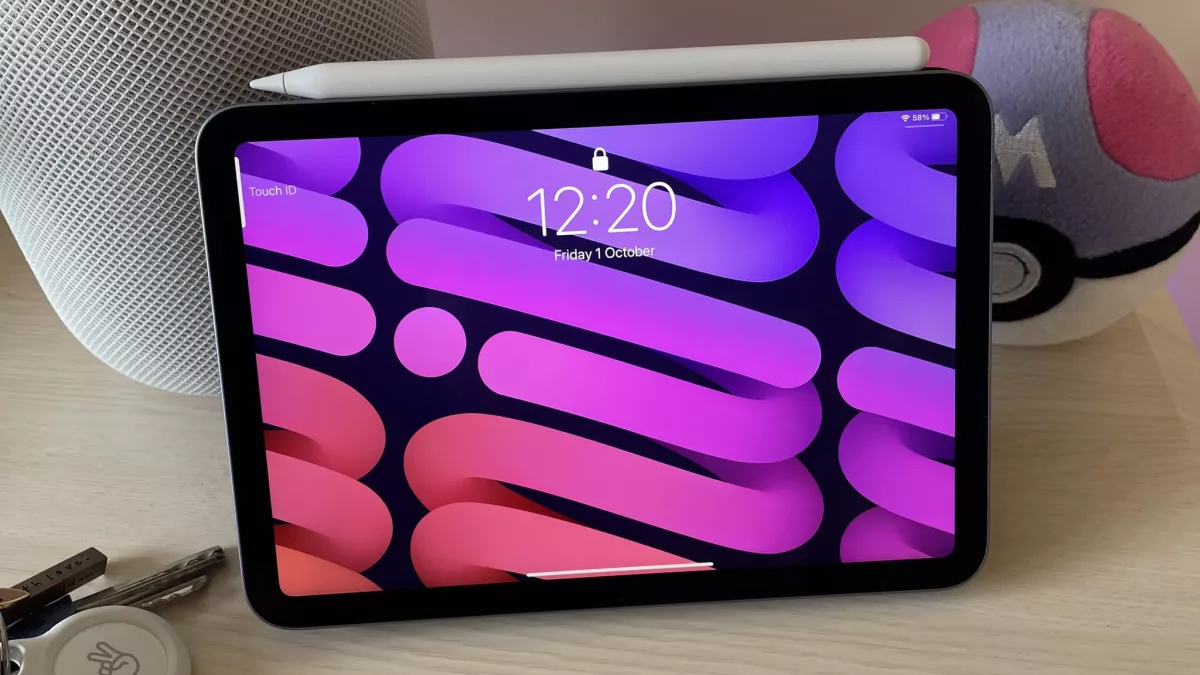
When we reviewed the iPad mini 6, we realized it can’t be beaten for convenient portability. It comes in four gorgeous new colors compared to the previous model, and while it starts at 64GB storage, you can go up to 256GB. That should be more than enough for storing all your digital artwork.
Compared to the previous iPad mini, it also has a brand new redesign so it’s more in line with the rest of the iPad range, other than the base-level iPad. That means flat edges, smaller bezels surrounding the delightful 8.3-inch Liquid Retina display, USB-C charging, and no more Home button. It uses Touch ID, now located in the top button, with the volume buttons also up top.
The volume buttons have moved because the iPad mini 6 now supports the Apple Pencil 2, with the stylus magnetically attaching to the right side of the device. Apple Pencil 2 support means you get pressure sensitivity and a double-tap for changing tools. It’s easily the best iPad for artists seeking the best portability.
Other new features include better cameras, now with Center Stage support for video calls, 5G connectivity on the cellular model, and the A15 Bionic chip that’s similar to that seen on the iPhone 13 lineup.
Perfect for travel while still allowing you plenty of flexibility with your sketches, the Apple iPad Mini 6 is the little tablet that truly could.
Best budget option: iPad 9th-Generation (2021)
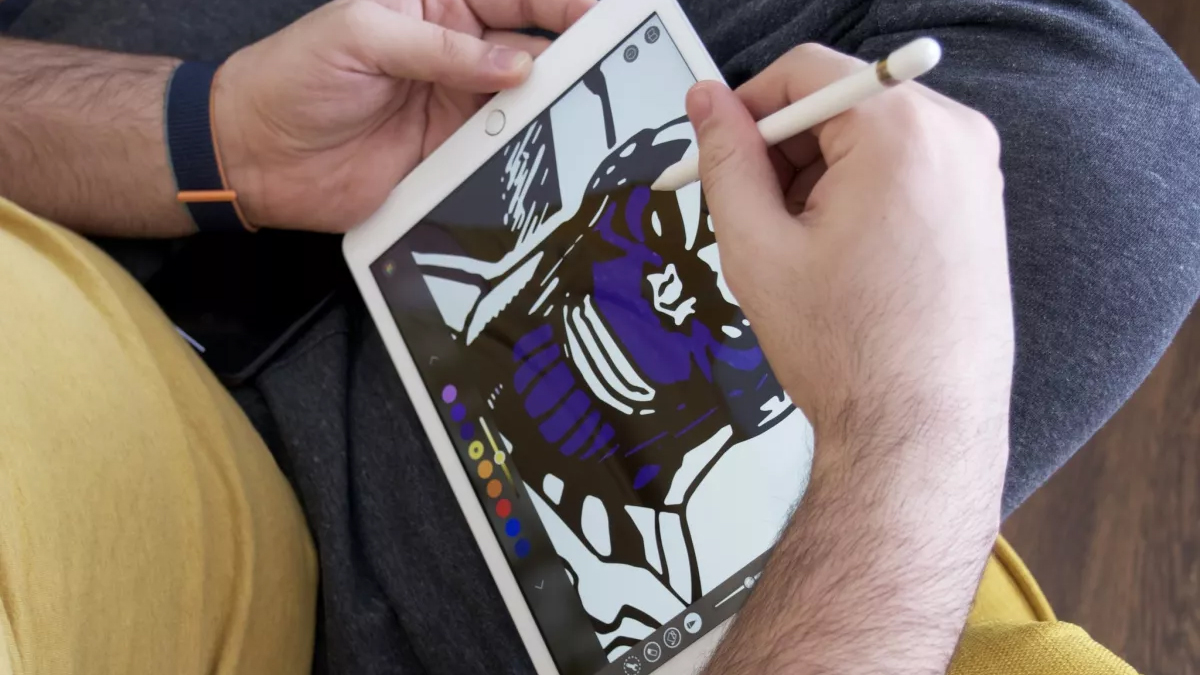
The 9th-generation iPad (2021) may not be the latest base-level iPad any more, but it’s still a handy option for artists on a budget. That’s thanks to it offering first-generation Apple Pencil support. It also has the A13 Bionic chip under the hood so it’s plenty powerful for basic drawing, sketching, along with watching videos, reading, writing, and other things. Its storage starts at 64GB but you can go up to 256GB if needed.
The tablet offers a beautiful 10.2-inch LCD Retina display with incredibly sharp and detailed graphics and text. It’s the second smallest display in the iPad range, but there’s still plenty of space for drawing and sketching, with support for a huge array of drawing apps from the App Store.
While first-generation Apple Pencil support might not sound amazing, it’s still one of the best iPad styluses and it works well with the iPad. You can seamlessly draw with tilt and pressure sensitivity, as well as palm rejection. The main downside is that you can only charge it via Lightning and there’s no wireless charging support like with the newer Apple Pencil 2. Also, it’s completely cylindrical with no flat edge, so it’s prone to rolling on a flat surface.
out there that works wonderfully with your iPad. You’ll be able to seamlessly draw with tilt and pressure sensitivity, as well as palm rejection, so there won’t be any unwanted marks on your sketch. Just know that the first-generation Apple Pencil only charges up via Lightning and doesn’t support wireless charging like the Apple Pencil 2. And the first-generation Apple Pencil is completely cylindrical with no flat edge, so it may be prone to rolling on a flat surface.
Best non-Pro option: iPad 10th-generation (2022)

The latest iPad is still a great option for artists looking for the best iPad for drawing. It has some great features for anyone looking to draw on the go, even if it lacks the power of the iPad Air or the iPad Pro. It costs a bit more than previous base iPads but it’s a worthwhile investment.
A little more powerful under the hood than before, it has the A14 Bionic chip, so there’s more processing power to help with your drawing apps. There’s also slightly more RAM, and some extra graphics prowess too.
The biggest upgrade for the iPad is its larger 10.9-inch screen. It’s the same as the iPad Air, and it’s big, colourful, and bright. Your pictures will shine on here even if it lacks the HDR you’d see on the iPad Pro. It’s not a laminated screen so colors can be a little more washed out but it’ll do just fine for regular sketching. Those who notice these things will detect the sound of the pen hitting the tablet more, as it sounds slightly more hollow than a laminated screen.
It also costs a little more than the model that came before – to the tune of about $130. That’s nothing to sniff at, but you do get enough extras to justify the cost. Either way, its a stunning tablet for doing some drawing.
How to choose the best iPad for artists
If money is no object, the 12.9-inch iPad Pro is an excellent and powerful tablet. It’s great for whatever kind of art you want to create, which is why it tops our list as the best iPad for artists. Its large display gives you plenty of room to work, while it’s also incredibly powerful.
Its size is certainly noticeable but it’s similar to a 13-inch MacBook Air or MacBook Pro, which will still in a lot of the best laptop bags. It also has its gorgeous Liquid Retina XDR display, so you really get the best colors. It’s the best way to view HDR content too.
Being able to magnetically attach the Apple Pencil 2 to the side of your iPad Pro is a huge boon. Not just because you can easily take it with you, but because it acts as an inductive charger too. It’s always ready to go and by your side.
Developers have really gone all-in with taking advantage of the M2 chip with apps like Procreate truly shining here. It’s good on other iPads, but the iPad Pro’s 8-core GPU really helps, meaning it’s perfect for your artistic endeavors, no matter how demanding they might be.
Other iPads may be more portable or cheaper, which is why we’ve picked them out too, but none beat the prowess of the 12.9-inch iPad Pro. If the size is unwieldy for you, there’s always the 11-inch iPad Pro. You miss out on the Liquid Retina XDR display, but there’s still the powerful processor and more.
